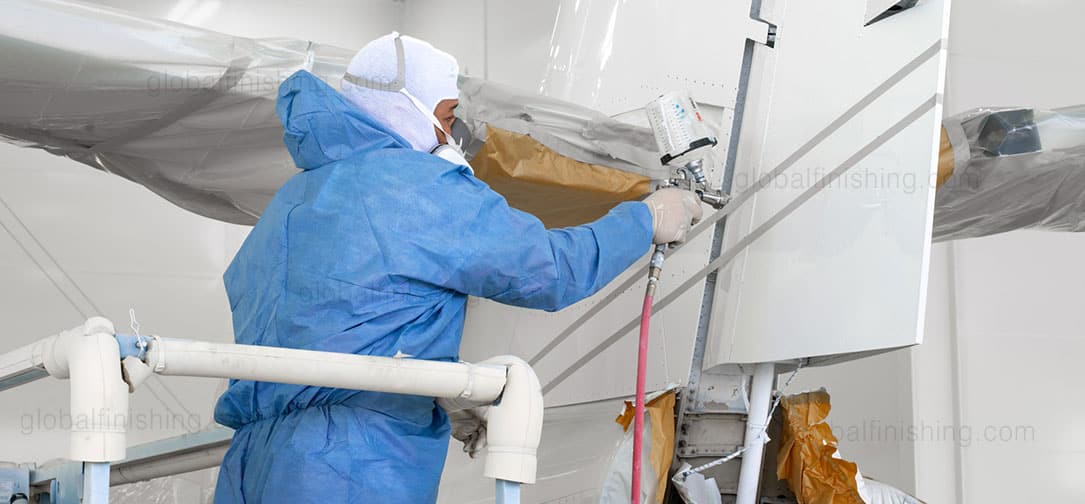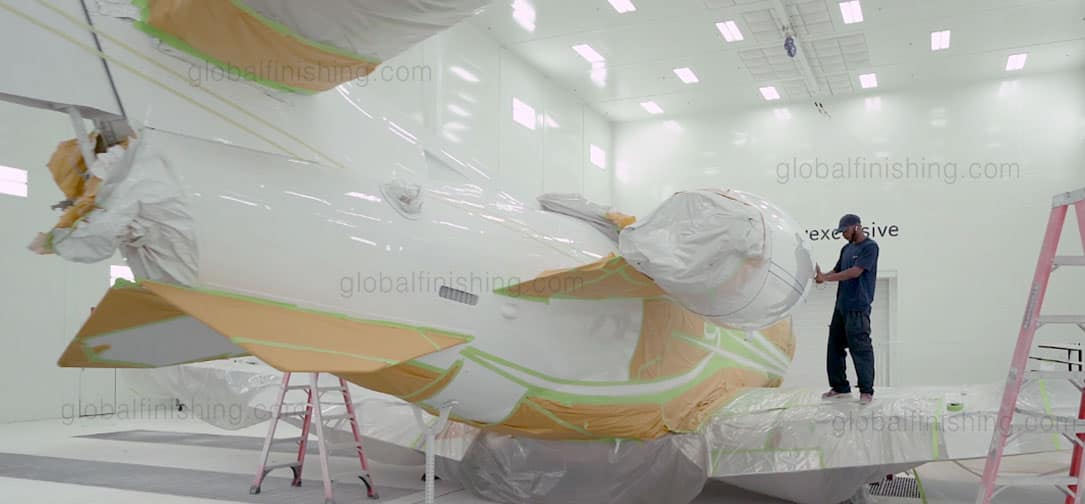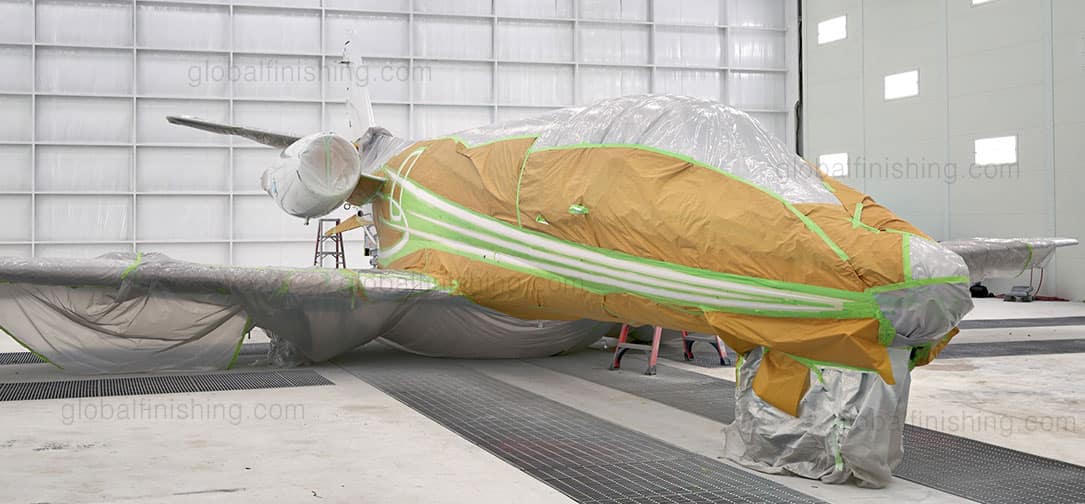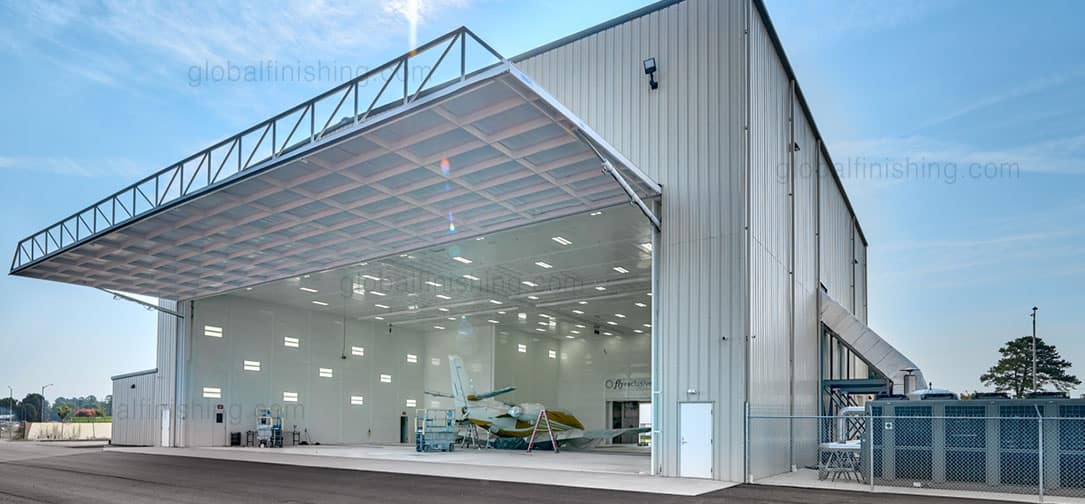
Sean Callahan has spent the past 30 years refinishing aircraft. He has worked on countless types of airplanes, both big and small, for large corporations and private businesses, for actors, musicians and athletes.
Yet everywhere Callahan has gone, in jobs that have crisscrossed the country, he has never worked in anything other than a Global Finishing Solutions (GFS) paint booth. So when Jetstream Aviation was looking for a new maintenance, repair and overhaul (MRO) facility at the North Carolina Global TransPark, Callahan was happy to hear a GFS Aircraft Paint Booth was in the plans.
“When I was recruited and interviewed with Jetstream, I was relieved to hear that GFS was building the paint booth,” Callahan said. “I knew the benefits of downdraft airflow, the heat capabilities, the chiller capabilities — being able to get the booth up to temperature to cure, coming in the next morning and having a dry aircraft to paint. I knew exactly what they were building, and I knew what GFS was about.”
Jetstream’s paint shop in Kinston, North Carolina, became operational in 2021, with a GFS Aircraft Paint Booth that measures 95 feet wide, 30 feet high and 104 feet deep. An airflow rate of 210,000 CFM, coupled with an air-cooled chiller and heated Air Make-Up Units (AMUs), give Jetstream the ability to complete basic repairs to the most complex ones, in the least amount of time possible.

With 16 technicians on staff at the North Carolina Global TransPark, Jetstream completes interior refurbishments and exterior restoration on flyExclusive’s fleet of corporate and business jets. Similar to NetJets, flyExclusive has a “floating fleet” of 75 airplanes in the U.S. that are rented by companies, celebrities and the wealthy at between $8,000 and $14,000 an hour. It is the eighth-largest of nearly 2,000 U.S. private jet charter companies.
Jetstream averages two restorations a month, as jobs often take weeks at a time, given their complexity. Once a third working bay is constructed, technicians can strip and wash in one bay, while sanding in another bay.
Eventually, Callahan, paint shop supervisor for Jetstream, wants to grow to about 35 people on staff, which would allow for a second shift and a weekend shift, with the goal of restoring four airplanes a month. Jetstream would be working on planes almost all day, every day — and around-the-clock coverage may be needed to support a five-year backlog.
“Because our fleet is always outside, after three or four years, the planes are ready to be stripped and painted again due to corrosion issues,” Callahan said. “We will never run out of work just painting our own planes.”
For Jetstream, consistency in the finishing process is perhaps the biggest benefit of the GFS Aircraft Paint Booth. Even though flyExclusive’s fleet includes aircraft of varying styles and sizes, the paint booth’s downdraft airflow, as well as temperature, humidity and contamination control, make it easier to achieve the high-quality finishes demanded by customers making seven-figure investments in their airplanes annually.

“We strip and paint each aircraft exactly the same, no matter the color, no matter the livery,” Callahan said. “We have the same paint processes for stripping, for sanding, for conversion coats, for priming. We look at safety, we look at quality and we look at results. That is why downdraft airflow is the way to go. There is even airflow over the whole airframe, and we don’t have any blush spots or areas that dry quicker than others. We have a dirt-free finish if our prep work is done correctly.”
As aircraft refinishing technology has evolved the past three decades, Callahan has watched GFS stay ahead of the curve. He marvels at the capabilities of GFS Aircraft Paint Booths today, compared to his early years in the industry.
The most notable improvements, Callahan said, are “being able to cook an airplane at 120 degrees for eight hours, so we can come in the next day and lay out and stretch tape on the aircraft, instead of waiting three days for it to dry. We can now lower the humidity down to 60 or 65 percent instead of 95 or 100 percent, so the painters are not overheated in the booth. Our limitations are a lot less now, and we can change the parameters for temperature and humidity whenever we want.”

Callahan anticipates Jetstream will be his final stop on the job trail. At 53 years old, he has had his fill of startups. And the pieces to the puzzle are quickly fitting together for Callahan at Jetstream, anchored by the familiar GFS Aircraft Paint Booth that has been a mainstay in his career.
“It feels good knowing that we can pull it off and telling the owner and shareholders that we can make this work,” Callahan said. “It is largely because the paint booth is working exactly as designed. I cannot think of a single thing that has not worked as designed. Everything has worked exactly the way we have wanted it to.”
One of the best ways to highlight your business is through a story that you can share across your online platforms. It humanizes your business and shows that your business can make a meaningful impact. Your testimonial would be used as a project profile on the GFS Booth Blog and can be shared on your website and/or social media channels.
Complete this form and we’ll be in touch to showcase your company.

Shop a variety of GFS aftermarket products, including booth protection products and mobile accelerated curing units. And enjoy the convenience of fast and free ground shipping throughout the contiguous United States.

Located at GFS’ headquarters in Osseo, Wisconsin, the Center for Excellence is an innovative facility featuring an automotive refinish training center, as well as a separate space dedicated to technical product training.

GFS is continuously searching for talented, ambitious individuals to join our team. We aim to provide our employees with every opportunity to make an impact on the company and find their niche along the way — weather in a production, field services or an office position.